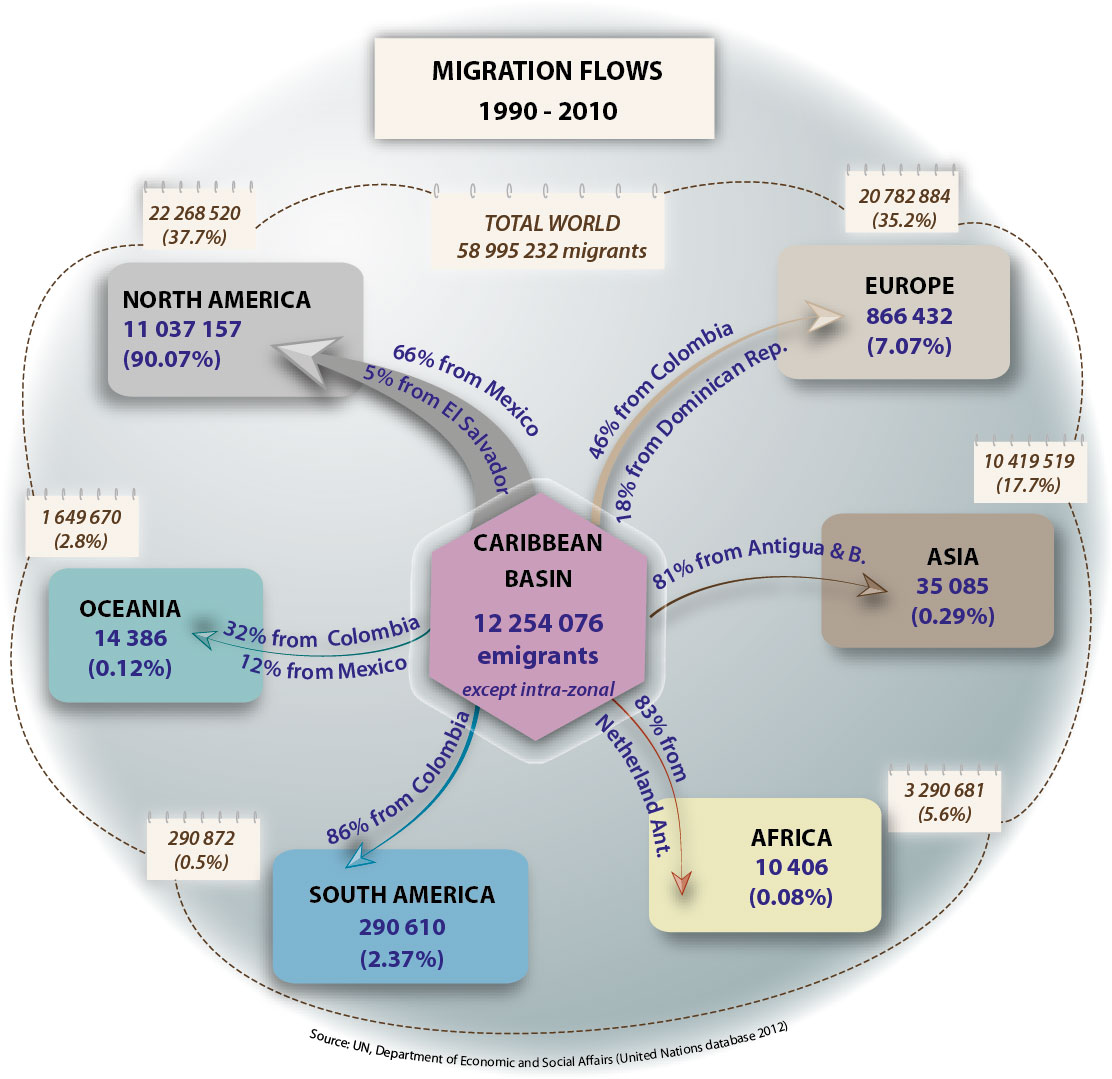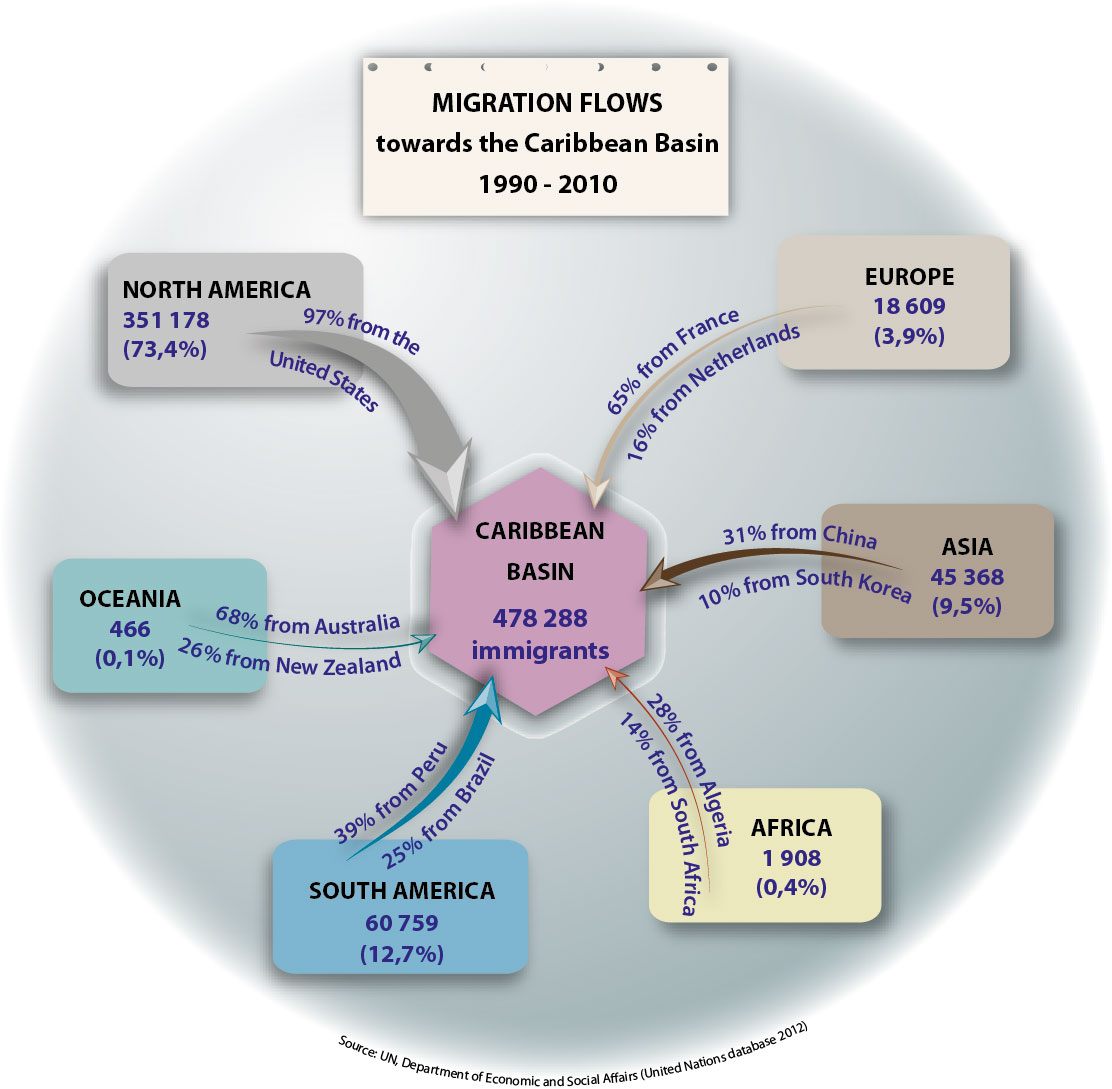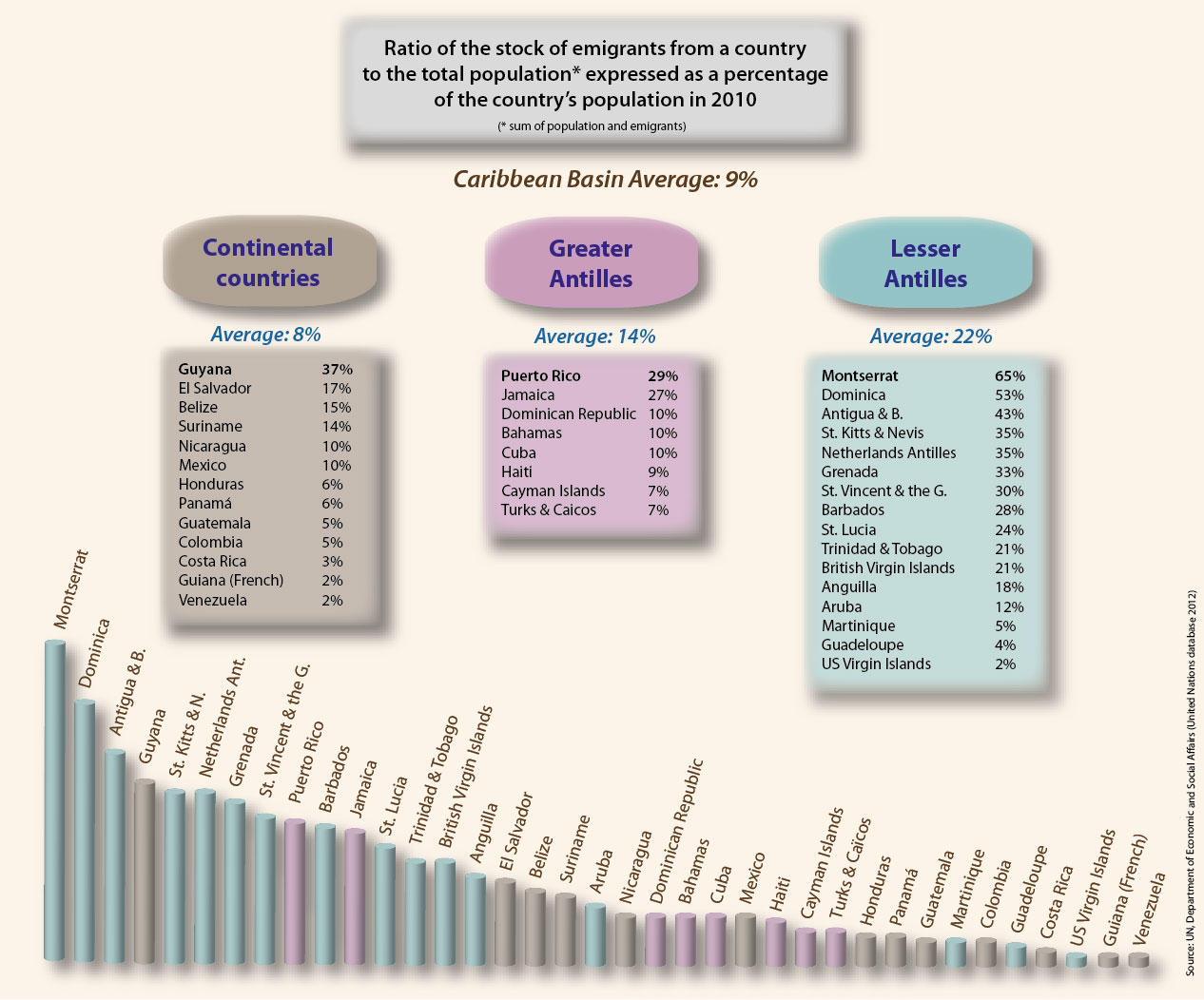
- Caribbean mobilities
- Colonization: an indelibly engraved imprint
- Dialogue on caribbean migration
- Freedom and new mobilities (19th C)
- Les décisions récentes de la politique migratoire en République Dominicaine FR
- Les migrations intra-caribéennes (2020) FR
- L’immigration haïtienne en République Dominicaine FR
- L’ "anti-haïtianisme" en République Dominicaine ? FR
- Migraciones de Haicianos ES FR
- Migrations (1960-1990)
- Migrations (1990-2010)
- Migrations 2010-2017 FR
- Migrations : nouvelles tensions FR ES
- Migrations intra-caribéennes FR
- Mobilities of violent appropriation
- Mobilités pendulaires et macrocéphalies urbaine et professionnelle : le cas de la Guadeloupe et de la Martinique FR ES
- Revolutions in energy and transport
Over the last twenty years, another pattern of migrations has become all too obvious to give the contemporary model. Europe does not have any more the place which it had during the previous time (1960-1990), North America saw his increasing considerably. The emigration towards other areas of the world constitute the main part of flows, but in the Caribbean Basin the intraregional movements still prevail, even in certain cases are reinforced. In mass, excluding Mexico which crushes the statistics, the countries of the isthmus, Colombia, and the Greater Antilles constitute the man flows towards North America. Compared to the country’s population, there are strong differences in the archipelago: less than 12% in Dominican Republic or Haiti, more than 70% in Antigua-and-Barbuda, 110% in Dominica, and more than 180% in Montserrat.
United States still the top country of destination, with Hispanic population nearly doubling over last decade
For 2000-2010, the United States followed by Spain and Italy were the top net immigration countries, whereas Mexico, China and Pakistan were the top net emigration countries. In 2010, 20 per cent of all international migrants were residing in the United States of America alone (42.8 million), including 29% of Mexicans (12.2 million).
New migration patterns are emerging in Latin America, with new migrants coming from sub-Saharan Africa, and South Asia.
In 2010, the number of international migrants in the world was estimated at 214 million, an increase of 35 million since 2000 and 58 million since 1990. International migrants represented 3.1 per cent of the total world population, Europe hosted the largest number of international migrants in the world (70 million), representing one-third of the global total. The second largest number of international migrants were in Asia (61 million), followed by Northern America (50 million), Africa (19 million), Latin America and the Caribbean (7 million) and Oceania (6 million). Oceania had the highest percentage of international migrants relative to the total population (16.8 per cent), followed by Northern America (14.2 per cent) and Europe (9.5 per cent). In Africa, Asia and Latin America and the Caribbean international migrants accounted for less than 2 per cent of the total population.
top
|
  |

















